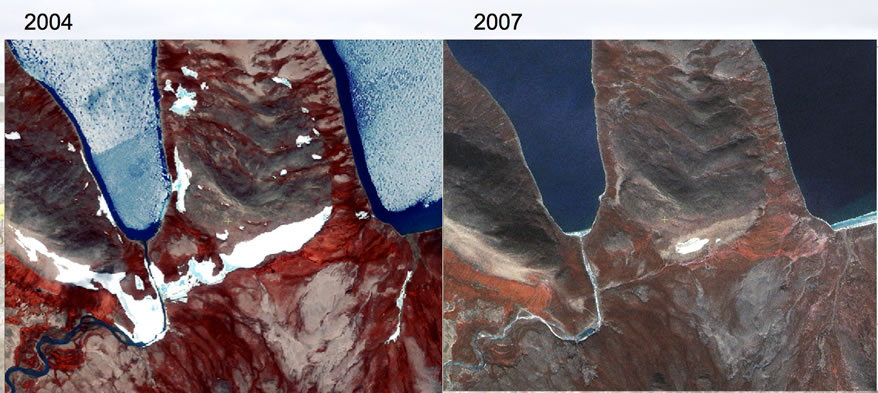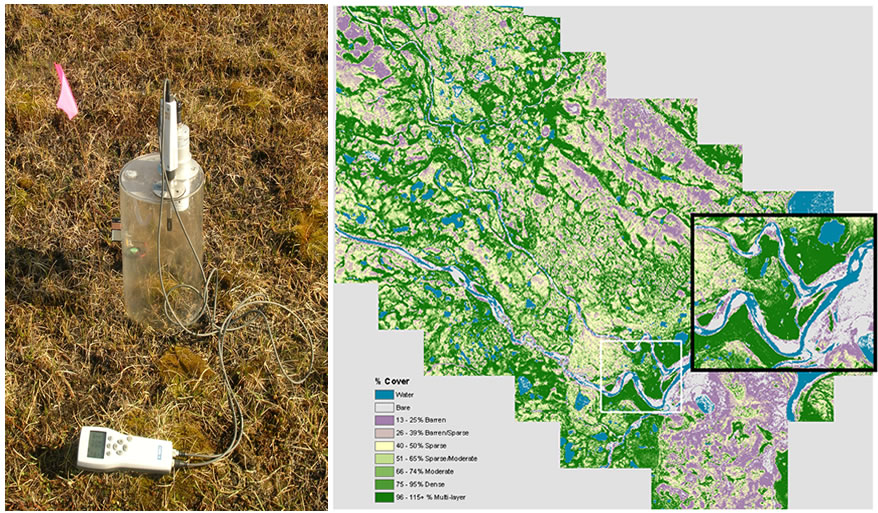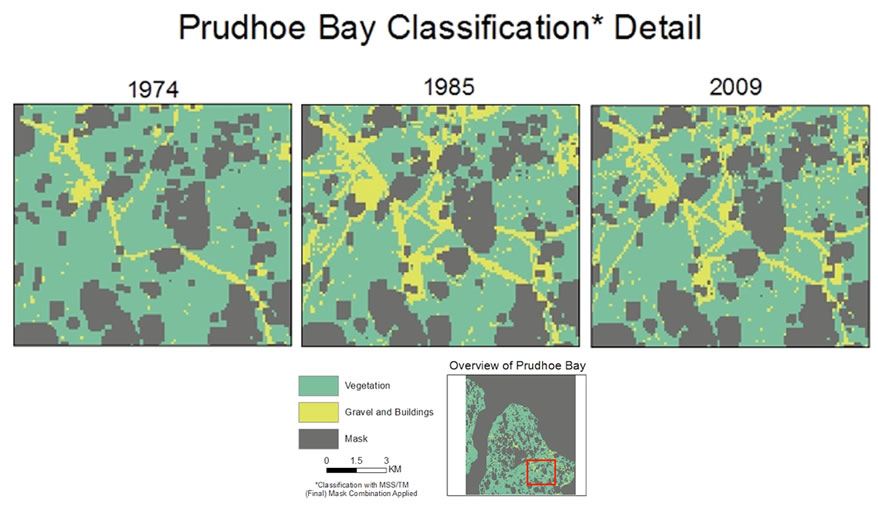Graduate Student Opportunities - NEW
Dr. Atkinson is Is actively seeking Graduate Studies Candidates with a background in Environmental Science or Physical Geography for the following projects. Field Experience is always a Bonus. There is a potential for field work in the Summer of 2016!!
Current and Potential Research Projects
Hyperspectral Remote Sensing of Biophysical Variables
The spectral reflectance of vegetation and other surfaces provides a proxy measurement for many underlying biological and physical variables. Traditionally, remote sensing has examined objects and areas using broadband multispectral imaging of visible and near-infrared electromagnetic reflectance. Hyperspectral imaging, with POLAR SEAL’s ASD HandHeld 2 Portable Spectroradiometer, measures the spectral range of 325 nm – 1075 nm with 1-3nm spectral resolution generating smooth detailed spectral curves that provide insight into the biophysical characteristics of the object or area. Hyperspectral reflectance measures have the potential to model such variables as; vegetation cover, biomass, foliar nitrogen, chlorophyll, plant water-stress, plant biochemistry, as well as mineral composition of soils and rock.
Estimation of Perennial Snow Pack Changes and the Impact on Adjacent Wetland Ecosystems
In the High and Mid Arctic the development of ecosystems is under the primary control of macro and micro topographic impacts on local soil hydrological regimes. In most ecosystems soil moisture is high during and directly after snowmelt. All ecosystems are often saturated for a period of time, and it is how quickly these ecosystems dry or retain moisture that defines the ecosystem during the summer growth period. The wet sedge tundra ecosystems are often adjacent to large, late-season snowpack, which provides saturating levels of water for most or all of the season. Remote sensing evidence has indicated that several of these snowpack's were perennial in nature and did not fully melt until recently. These changes to snowpack and their impact on the wet sedge ecosystems are of particular interest in this research. Remotely sensed and field based research is needed to fully understand the impact these hydrological changes can have on these wetland ecosystems and there associated processes, such as nitrogen fixation, carbon dioxide exchange, and productivity.

Modelling and Scaling CO2 Exchange in Arctic Ecosystems
The rates of CO2 uptake through photosynthesis (gross ecosystem productivity: GEP) and carbon losses from plant and soil respiration (ecosystem respiration: ER) have the potential to change with an altered climate, shifting the Arctic net ecosystem CO2 exchange (NEE) from a carbon sink to a carbon source, possibly creating a positive feedback mechanism, intensifying global climate change (ACIA, 2005; Shaver et al., 2007; Dagg and Lafleur, 2011). The patterns and processes of arctic ecosystems vary in relation to the spatial scale of examination. At the regional scale (across climatic zones), climate, topography, parent material, and time govern the distribution of ecosystems and their biophysical processes (Jenny, 1994; Chapin et al., 2002). At the landscape scale, vegetation communities exhibit extreme patchiness due to the primary control of macro and micro topographic impacts on local soil hydrological regime. Spectral vegetation indices, specifically the normalized difference vegetation index (NDVI), have the potential to provide valuable information for the assessment and monitoring of vegetation patterns that can be utilized to predict patterns of carbon flux (Ostendorf and Reynolds, 1998; Goetz and Prince, 1999; McMichael et al., 1999; Boelman et al., 2003; Shaver et al., 2007; Huemmrich et al., 2010). This research examines cross scale relationships and appropriate methods to go from landscape to regional scale.

Landscape fragmentation and Arctic Vegetation Change
Increased vegetation growth within the Arctic and specifically on the North Slope of Alaska, is well documented within scientific literature (Jia et al., 2003; Stow et al., 2004). However, as the North Slope has become more industrialized due to the development of the Prudhoe Bay Oil Field, vegetation communities may have been affected. This industrialization, such as building, pipeline, and road construction (Eller, 1977; Auerbach et al., 1997), has been shown to modify vegetation types in subarctic and arctic study sites. Industrialization can lead to increased landscape fragmentation in which the dominant vegetation of the area is broken down into increasingly smaller patches. As the fragmentation levels of a landscape shift, the biophysical variables of the ecosystems may be impacted. This research focuses on assessing landscape fragmentation and its impact on biophysical variables through the development life of the region, with a particular concern over the potential impact on gas field development within the Canadian North.

Past Projects
Bathurst Inlet Port and Road Route Modelling and Aggregate Estimation
References
ACIA, 2005. Arctic climate impact assessment. Cambridge: Cambridge University Press.
Auerbach, N.A., M.D. Walker, and D.A. Walker. 1997. Effects of Roadside Disturbance on Substrate and Vegetation Properties in Arctic Tundra. Ecological Applications. 7(1), 218-235.
Boelman, N. T., Stieglitz, M., Rueth, H. M., Sommerkorn, M., Griffin, K. L., and Shaver, G. R., 2003. Response of NDVI, biomass, and ecosystem gas exchange to long-term warming and fertilization in wet sedge tundra. Oecologia. 135, 414-421.
Chapin III, F. S., Matson, P. A., and Mooney, H. A. (2002). Principles of terrestrial ecosystem ecology. New York: Springer.
Dagg. J. and Lafleur, P., 2011. Vegetation Community, Foliar Nitrogen, and Temperature Effects on Tundra CO2 Exchange across a Soil Moisture Gradient. Arctic, Antarctic, and Alpine Research. 43(2), 189-197.
Eller, B.M. 1977. Road dust induced increase of leaf temperature. Environmental Pollution. 13, 99-107.
Goetz, S.J. and Prince, S.D., 1999. Modeling terrestrial carbon exchange and storage: evidence and implications of functional convergence in light-use efficiency. Advances in Ecological Research. 28, 57–92.
Huemmrich, K.F., Gamon, J.A., Tweedie, C.E., Oberbauer, S.F., Kinoshita, G., Houston, S., Kuchy, A., Holister, R.D., Kwon, H., Mano, M., Harazono, Y., Webber, P.J., Oechel, W.C., 2010. Remote Sensing of tundra gross ecosystems productivity and light use efficiency under varying temperature and moisture conditions. Remote Sensing of Environment. 114, 481-489.
Jenny H. 1994. Factors of soil formation: a system of quantitative pedology. 2 ed. New York: Dover.
Jia, G.J., H.E. Epstein, and D.A. Walker. 2003. Greening of arctic Alaska 1981-2001. Geophysical Research Letters. 30(20), doi:10.1029/2003GL018268.
McMichael, C.E., Hope, A. S., Stow, D. A., Fleming, J. B., Vourlitis, G, and Oechel, W., 1999. Estimating CO2 exchange at two sites in Arctic tundra ecosystems during the growing season using a spectral vegetation index. International Journal of Remote Sensing. 20, 683-698.
Ostendorf, B., and Reynolds, J. F., 1998. A model of arctic tundra vegetation derived from topographic gradients. Landscape Ecology. 13, 187-201.
Shaver, G.R., Street, L.E., Rastetter, E.B., Van Wijk, M.T., and Williams, M., 2007. Functional convergence in regulation of net CO2 in heterogeneous tundra landscapes in Alaska and Sweden. Journal of Ecology. 95, 802-817.
Stow, D.A., Hope, A., McGuire, D., Verbyla, D., Gamon, J., Huemmrich, F., Houston, S., Racine, C., Sturm, M., Tape, K., Hinzman, L., Yoshikawa, K., Tweedie, C., Noyle, B., Silapaswan, C., Douglas, D., Griffith, B., Jia, G., Epstein, H., Walker, D., Daeschner, S., Petersen, A., Zhou, L., and Myneni, R., 2004. Remote sensing of vegetation and land-cover change in Arctic tundra ecosystems. Remote Sensing of Environment. 89, 281– 308.
